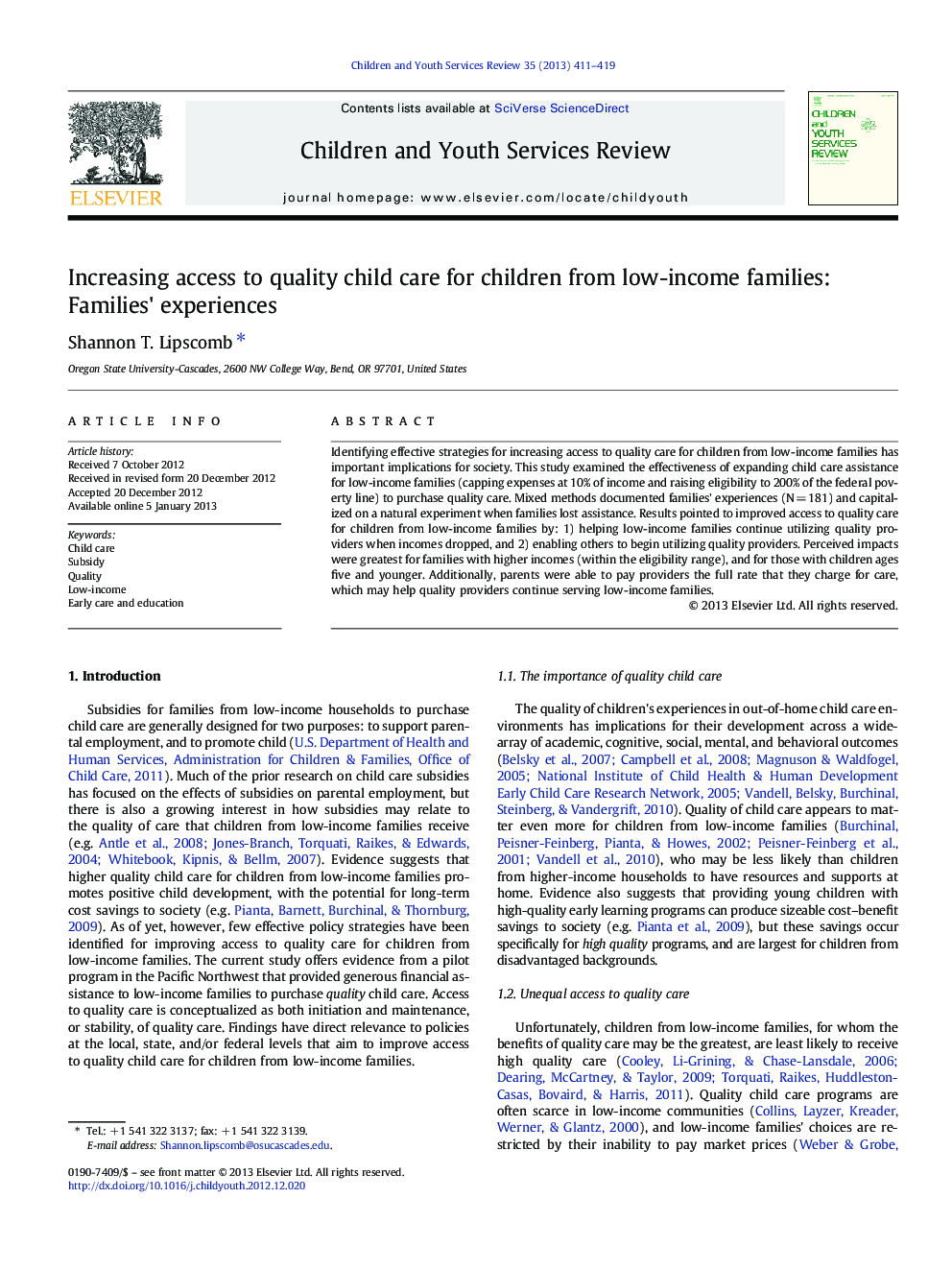| Article ID | Journal | Published Year | Pages | File Type |
|---|---|---|---|---|
| 346406 | Children and Youth Services Review | 2013 | 9 Pages |
Identifying effective strategies for increasing access to quality care for children from low-income families has important implications for society. This study examined the effectiveness of expanding child care assistance for low-income families (capping expenses at 10% of income and raising eligibility to 200% of the federal poverty line) to purchase quality care. Mixed methods documented families' experiences (N = 181) and capitalized on a natural experiment when families lost assistance. Results pointed to improved access to quality care for children from low-income families by: 1) helping low-income families continue utilizing quality providers when incomes dropped, and 2) enabling others to begin utilizing quality providers. Perceived impacts were greatest for families with higher incomes (within the eligibility range), and for those with children ages five and younger. Additionally, parents were able to pay providers the full rate that they charge for care, which may help quality providers continue serving low-income families.
► Expanded child care assistance for low-income families was linked with quality care. ► Assistance helped low-income families to initiate and maintain quality care. ► With assistance, families continued to utilize quality care when incomes dropped. ► Some families were able to purchase quality care for the first time. ► Impacts were greatest for families with higher incomes and children under age six.
